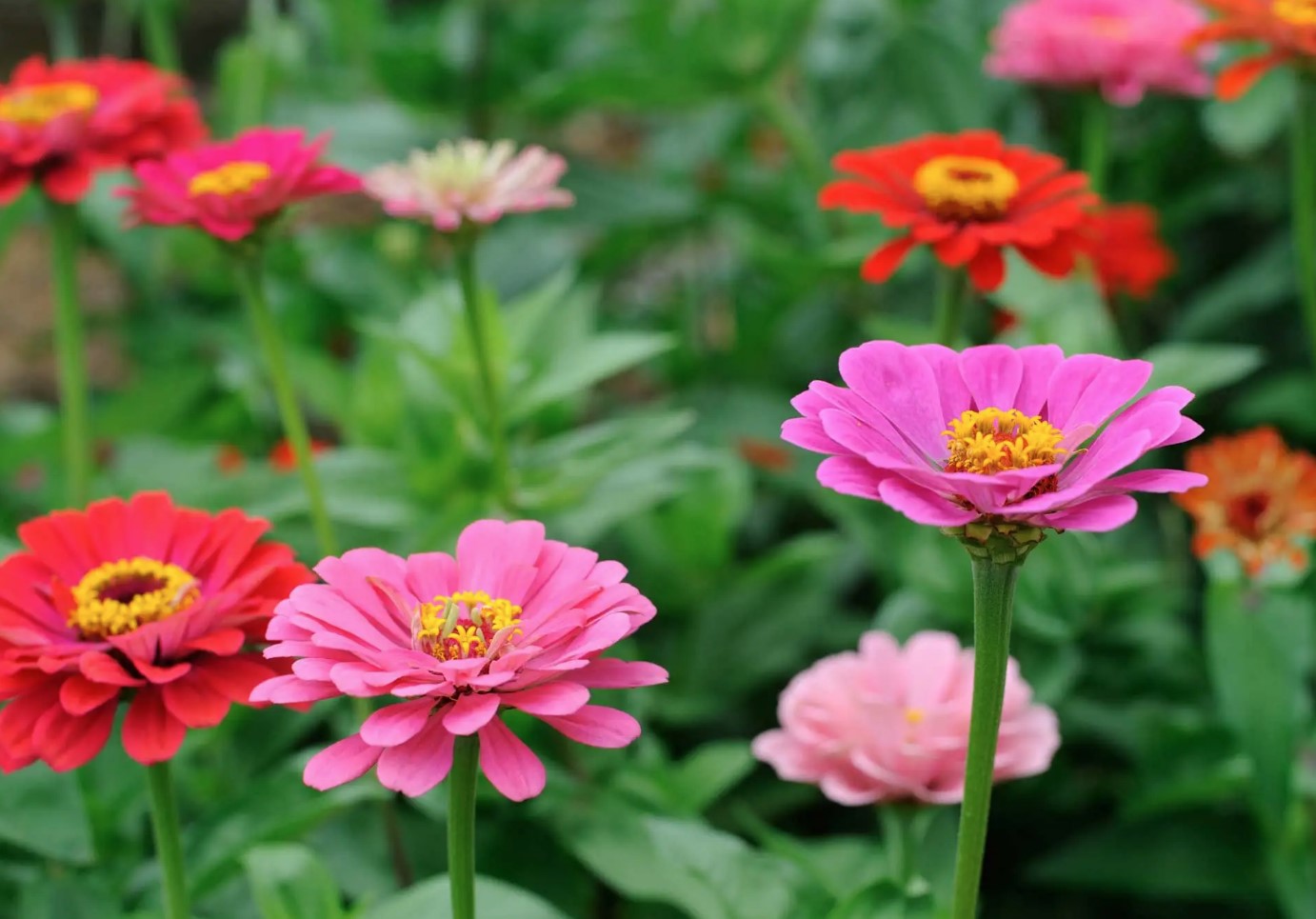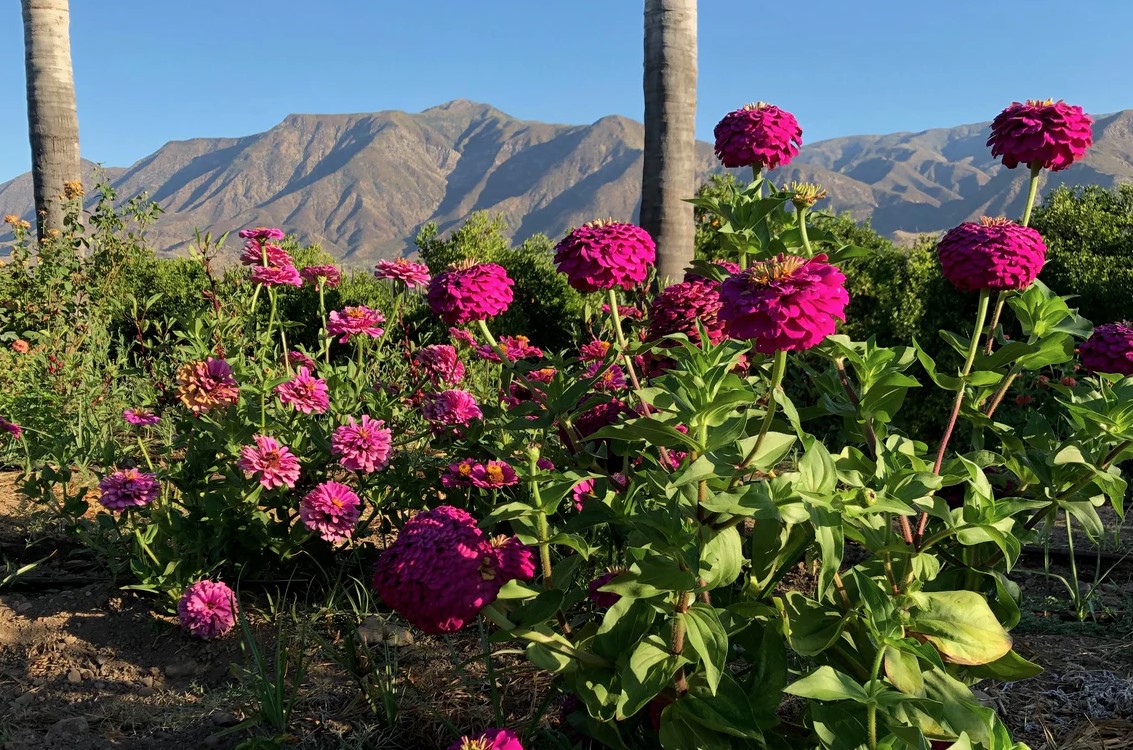
Zinnias are beloved annual flowers that add a burst of vibrant color to any garden. With their wide range of colors, sizes, and shapes, zinnia flowers have become a favorite among gardeners and flower enthusiasts alike. From the tall, majestic dahlia zinnias to the petite and charming single zinnias, there is a zinnia variety to suit every garden style and preference.
Types of Zinnias
There are numerous types of zinnias available, each with its unique characteristics and appeal. Some popular varieties include:
- Dahlia Zinnias: These large, showy zinnias resemble dahlias with their layered, petal-packed blooms. They can grow up to 4 feet tall and come in a spectrum of colors.
- Cactus Zinnias: Cactus zinnias feature twisted, spiky petals that add texture and interest to the garden. They are available in a range of hues, from soft pastels to bold primary colors.
- Single Zinnias: Single zinnias have a simple, daisy-like appearance with a single row of petals surrounding a central disc. They are perfect for a more subtle, naturalistic look in the garden.
- Heirloom Zinnias: Heirloom zinnias are varieties that have been passed down through generations, often prized for their unique colors, shapes, and hardy nature. They offer a touch of nostalgia and charm to any garden.
Growing Zinnias from Seeds
Growing zinnias from seeds is a rewarding and cost-effective way to fill your garden with these beautiful blooms. Here are some tips for success:
- When to Plant Zinnias: Zinnia seeds can be sown directly in the garden after the last frost date in your area. Alternatively, you can start the seeds indoors 4-6 weeks before the last frost for an earlier bloom.
- Planting Zinnia Seeds: Sow the seeds about 1/4 inch deep in well-draining soil. Space the seeds according to the mature size of the variety you are growing.
- Starting Zinnias Indoors: If starting seeds indoors, use seed-starting trays filled with a quality seed-starting mix. Provide adequate light and keep the soil moist but not soggy.
- Transplanting: Once the seedlings have developed several sets of true leaves and the risk of frost has passed, carefully transplant them to the garden, spacing them appropriately.

Zinnia Care
To ensure your zinnias thrive and produce an abundance of blooms, follow these care tips:
- Watering Zinnias: Zinnias prefer consistent moisture but avoid overwatering, which can lead to root rot. Water the plants deeply and allow the soil to dry slightly between watering sessions.
- Fertilizing Zinnias: Zinnias benefit from regular fertilization throughout the growing season. Use a balanced, water-soluble fertilizer every 2-3 weeks to promote healthy growth and abundant blooms.
- Deadheading Zinnias: Regularly remove spent blooms, a practice known as deadheading, to encourage continuous flowering and maintain a tidy appearance. Simply snip off the faded flowers just above the nearest set of leaves.

Companion Planting and Zinnias in the Garden
Zinnias make excellent companions for many other garden plants. Here are some ideas for incorporating zinnias into your garden design:
- Zinnias for Butterflies: Zinnias are a magnet for butterflies, providing them with nectar and adding movement and life to the garden. Plant zinnias alongside other butterfly-friendly plants like milkweed, butterfly bush, and lantana.
- Zinnias as Cut Flowers: With their long stems and vibrant colors, zinnias make fantastic cut flowers. Plant a dedicated cutting garden with a mix of zinnia varieties to enjoy fresh bouquets all summer long.
- Companion Planting with Zinnias: Zinnias can be grown alongside vegetables like tomatoes, peppers, and squash. They attract pollinators, which can improve yields, and their bright blooms add visual interest to the vegetable garden.

Troubleshooting Common Zinnia Problems
While zinnias are generally easy to grow, they can occasionally face some challenges. Here are a few common problems and how to address them:
- Powdery Mildew: This fungal disease appears as a white, powdery coating on the leaves. To prevent and control powdery mildew, ensure proper spacing for good air circulation, avoid overhead watering, and consider applying a fungicide if necessary.
- Aphids: These small, sap-sucking insects can infest zinnia plants. Control aphids by spraying the plants with a strong jet of water, introducing beneficial insects like ladybugs, or using insecticidal soap if the infestation is severe.
- Japanese Beetles: These iridescent beetles can skeletonize zinnia leaves. Hand-pick the beetles and drop them into soapy water, or use row covers to protect the plants during the peak beetle season.
Conclusion
Zinnia flowers are a delightful addition to any garden, offering a rainbow of colors and a variety of shapes and sizes. By following the tips for growing, caring for, and designing with zinnias, you can enjoy a summer filled with these charming and easy-to-grow blooms. Whether you prefer the bold beauty of dahlia zinnias, the unique texture of cactus zinnias, or the simplicity of single zinnias, there is a zinnia variety perfect for your garden. Plant zinnia seeds, provide them with the right care, and watch as your garden comes alive with the vibrant colors and inviting presence of these beloved annual flowers.



